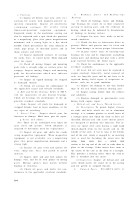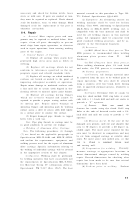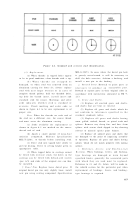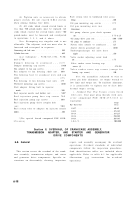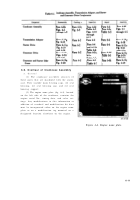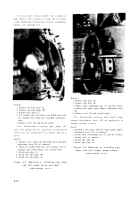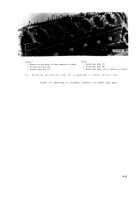TM-9-2815-200-35
ENGINE, WITH CONTAINER:TURBOSUPERCHARGED, DIESEL ,FUEL INJECTION ,90-DEGREE “V” TYPE, AIR - COOLED ,12 - CYLINDER , ASSEMBLY ;MODELS AVDS-1790-2M (2815-856-4996), AVDS-1790-2A AND AVDS-1790-2AM (2815-856-9005)
TECHNICAL MANUAL; DIRECT SUPPORT, GENERAL SUPPORT AND DEPOT MAINTENANCE MANUAL INCLUDING REPAIR PARTS AND SPECIAL TOOLS LISTS
TM-9-2815-200-35 - Page 301 of 779
Figure 6-1. Standard and oversize stud identification .
(3) Replacement .
(a) When threads in tapped holes appea r
to be in good condition, clean threads with a tap.
(b) When threads are stripped o r
damaged, or when stud was removed from a n
aluminum casting for loose fit, always replac e
stud with next larger oversize or in cases o f
complete thread pullout, drill out threaded holes,
tap hole for thread insert, install insert an d
standard stud for repair. Markings and colo r
code indicates whether stud is standard o r
oversize. Check marking and color code a s
shown in figure 6-1 to be sure replacement is of
proper size .
Note.
When the threads on each end o f
the stud are a different size, the coarse thread
end must enter the aluminum casting .
(c) Studs available for replacement a s
shown in figure 6-1 are marked on the coars e
thread end of stud .
(d) Apply a small amount of mica-bas e
antiseize
compound ,
Military Specificatio n
MIL-T-22361, to threads before installing stud .
(e) Drive stud into tapped hole slowly to
prevent heating. Drive to setting height given in
appropriate table .
(f) When tapped holes in castings canno t
be fitted with oversize studs, the holes in th e
castings can be fitted with helical-coil insert s
(par. 6-5) and studs of the original size can then
be installed .
f. Dowel Pins.
Replace loose dowel pins. I f
original dowel pin was only slightly loose, install
new pin using sealing compound, Specificatio n
MIL-S-22473. In cases where the dowel pin hole
is grossly out-of-round, it will be necessary to
drill the hole oversize, fashion a bushing, an d
install a new pin in the bushing .
g. Painted Parts.
Retouch or paint parts a s
necessary to produce a n
acceptable part .
Retouch or repaint parts in their original color in
accordance with instructions contained in TM 9 -
213 .
h. Gears and Shafts .
(1) Replace all cracked gears and shafts ,
and shafts that are bent or twisted .
(2) Replace all gears and shafts which do
not conform to tolerances specified in th e
overhaul standards tables .
(3) Replace all gears and shafts havin g
worn, galled, nicked, burred, or pitted teeth and
splines. Remove any sharp fins and burs fro m
splines with crocus cloth dipped in dry-cleaning
solvent or mineral spirits paint thinner .
(4) Replace all splined gears and shafts that
are damaged to the point of impairing assembly
or operation. Replace all gears and shafts having
splines which do not match properly with mating
splines .
i. Bushings, Liners, and Bushing-typ e
Bearings.
When bushings, litters, and bushing -
type bearings are damaged or worn beyon d
specified limits, generally the associated part s
with which they are used must be replaced .
Reference to (1) and (2), below, will be made in
the rebuild section for the particular part when
replacement of bushings, liners, and bushing -
type bearings is required .
6-7
Back to Top




